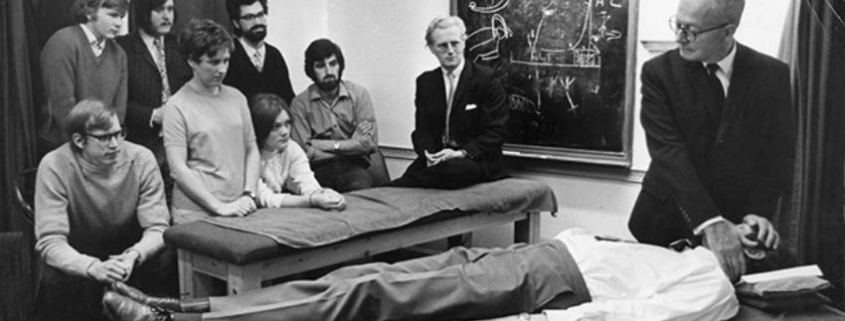History of Osteopathy
The practise of Osteopathy originated in America’s Midwestnear the turn of the 19th Century.
It was the pioneering foresight of a frontier physician living in Missouri, Dr Andrew Taylor Still, which led to the formulation of a new way of confronting healing and medicine.
Still’s initial impulse to reform what he saw as weaknesses inherent in conventional medicine led him to investigate and create an alternative to the traditional orthodoxy. This was officially heralded as the practise of Osteopathy in 1874.
Influenced by the prevailing conditions of war and the scourge of common epidemics with their high mortality rates, Still worked uncompromisingly to research the causality of disease and uncover the interconnections between the body’s systems and its psychological and emotional dimensions so as to originate a new methodology of healing.
Linking this with his philosophy of life and influenced by the traditions of magnetic healing and Mesmerism, Still viewed the human body as a holistic being with the capacity to self-heal.
His rationale was that any anatomical deviation could lead to disease (or disease could create a misalignment) and therefore it stood to reason that it could be corrected through hands-on Osteopathic techniques.
Whilst scepticism to such new ideas was a function of the historic period, Still was able to prove the efficacy of his treatment methods in the osteopathic practise he had established in Kirksville, Missouri.
By this time, in 1889, Still had been using his system of manipulation to improve circulation and correct altered mechanics for nearly two decades and had drawn a following across the country.
The success of this alternative model of medicine combined with the refinement of the scientific principles, led him to establish the firstschoolofOsteopathy. Opened in 1892 as the American School of Osteopathy, the first group of students included former patients, family friends and five of Still’s children.
He was assisted by a visiting doctor from Scotland, William Smith, who brought with him his knowledge of anatomy in exchange for instruction on the techniques and practise of Osteopathy.
By 1894, there were 18 diplomas awarded to the graduates of the school, and from thereon the study and practise of Osteopathic Medicine as a profession gained currency throughout America.
Following Still’s death in 1917, the inclusion of Osteopathy as a profession recognised by the American Medical Association, was a battle hard fought leading up to the time of the Vietnam War. It was only then that Osteopaths were allowed to serve as physicians for their country.
Now there are 26 Osteopathic colleges in the United States.
The acceptance of Osteopathy into mainstream practise in the United Kingdomwas only really achieved in 1993 with the Osteopath’s Act, the forerunner to the registration of Osteopathic practitioners through The General Osteopathic Council. Today there are nearly 6000 registered Osteopaths in the country.
The practise of Osteopathy in South Africa has also gained wider currency since the first osteopathic regulatory Act was passed in 1974. The Allied Health Professionals Council of South Africa (AHPCSA) set the minimum standards for registration and only Osteopaths who comply with these are permitted to practise.
Whilst no training is currently available in the country, the scope for the development of the profession in South Africa and the continent as a whole is significant.
View a list of common complains that Osteopathy can assist with
Discovery the benefits of Osteopathy
- What is Osteopathy?
- Adult health issues
- Babies and Children
- During and after pregnancy
- Common Complaints
- Testimonials
- Sports Injuries
- Genral Osteopathy FAQs
- The Science & Reasearch




Leave a Reply
Want to join the discussion?Feel free to contribute!